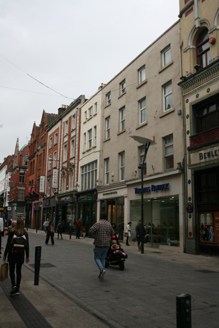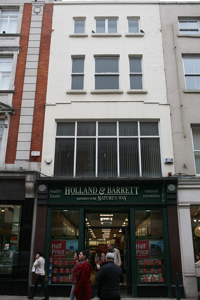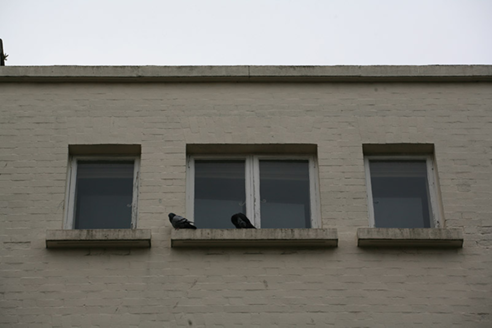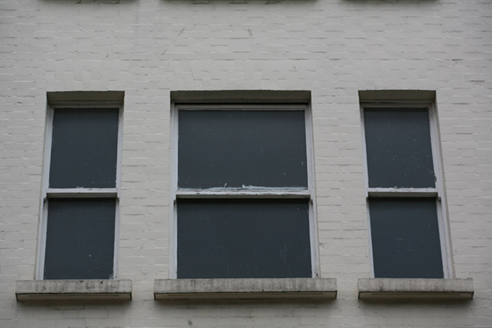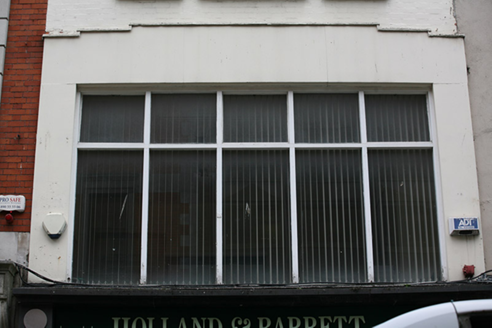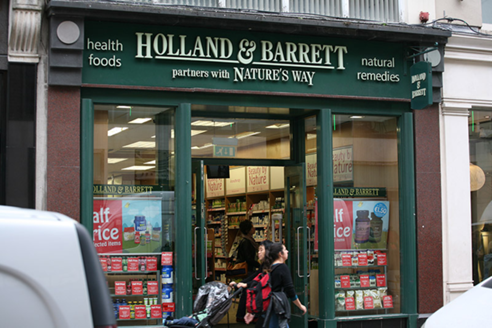Survey Data
Reg No
50920034
Rating
Regional
Categories of Special Interest
Architectural
Original Use
House
In Use As
Shop/retail outlet
Date
1750 - 1770
Coordinates
315917, 233749
Date Recorded
06/10/2015
Date Updated
--/--/--
Description
Attached three-bay four-storey former house, built c. 1760, refaced c. 1920, and now in use as shop with recent shopfront spanning ground floor. Hipped slate roof with ridge running perpendicular to street, having central glazed section and two chimneystacks to north party wall. Roof hidden behind brick parapet with masonry coping. Concealed rainwater goods. Brick walls laid in Flemish bond, slightly advanced to first floor with painted cladding and stepped trim over. Gauged brick square-headed window openings with masonry sills, in tripartite arrangement to second and third floors having one-over-one sliding timber sash windows to second floor with convex horns, timber casements to third floor, and full-span window to first floor with replacement fixed-pane timber glazing. Replacement timber glazed shopfront framed by polished granite clad pilasters and stylised masonry console brackets supporting masonry hood cornice. Fronting onto west side of Grafton Street with early-twentieth century three-storey rendered structure to rear of plot (west) fronting onto Swan Yard.
Appraisal
Dublin Civic Trust's "Survey of Gable-Fronted Houses and Other Early Buildings of Dublin" (2012) states "This group of three former townhouses (Nos. 75-77) are part of a handful of buildings to date from the mid eighteenth-century, albeit in a modified state with unassuming rendered and painted facades. Their steep roof configurations and chimneystacks indicate a potential early build date, as does the apparent placement of each staircase in the centre of each plan. The location of the chimneystacks and hipped character of the roofs would indicate a unified group of transitional type houses that may have never been gabled, constructed shortly after the publication of Rocque's 1756 map which depicts a partially vacant site at this location".
